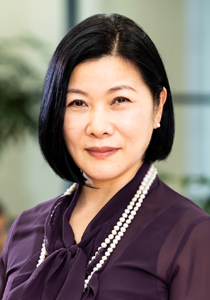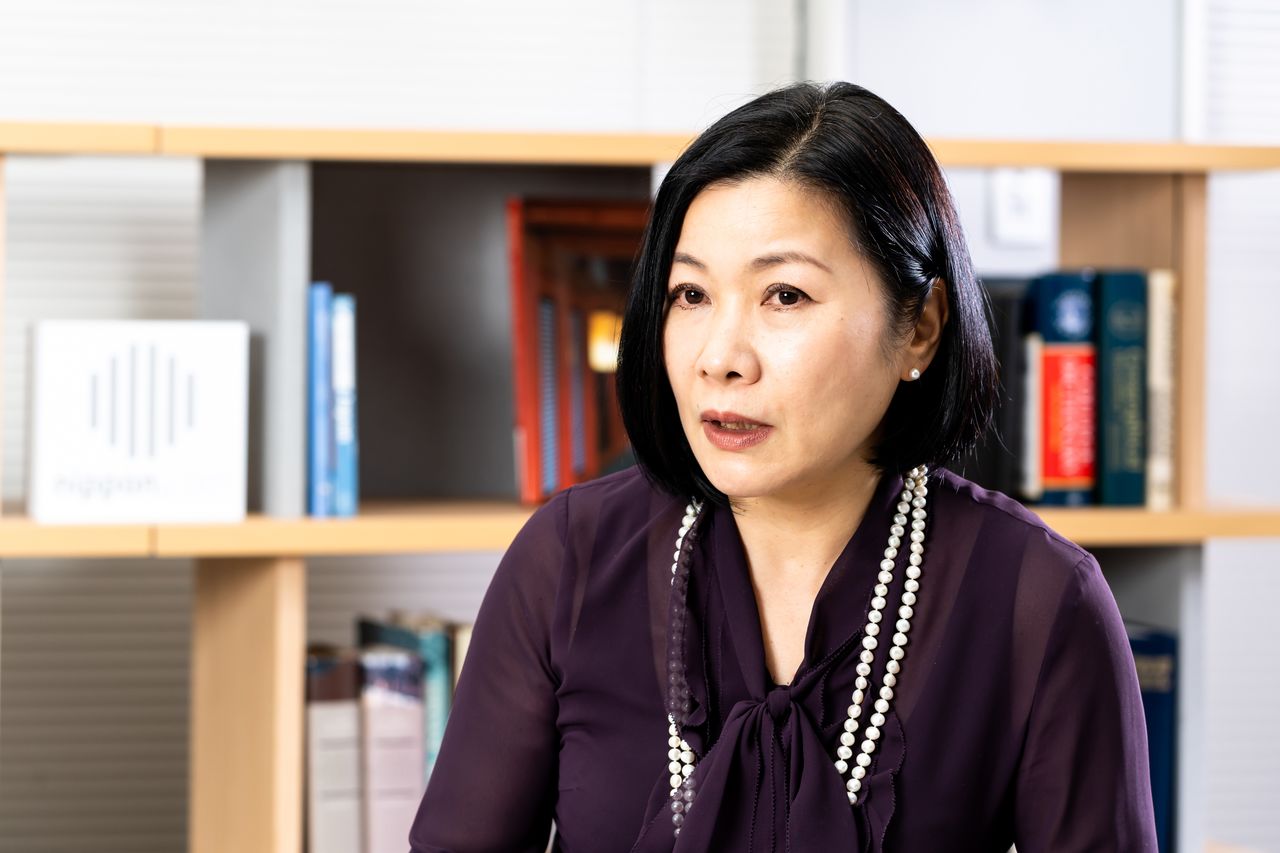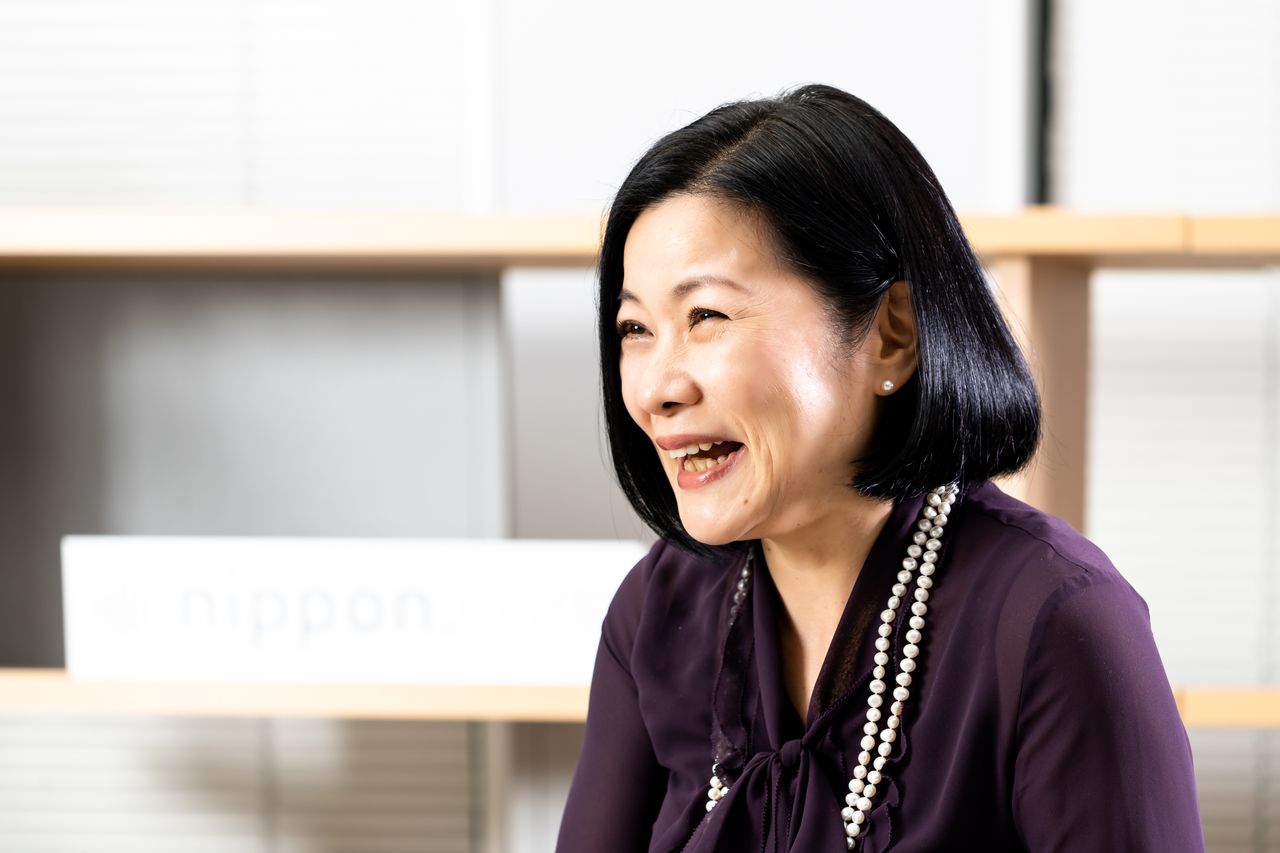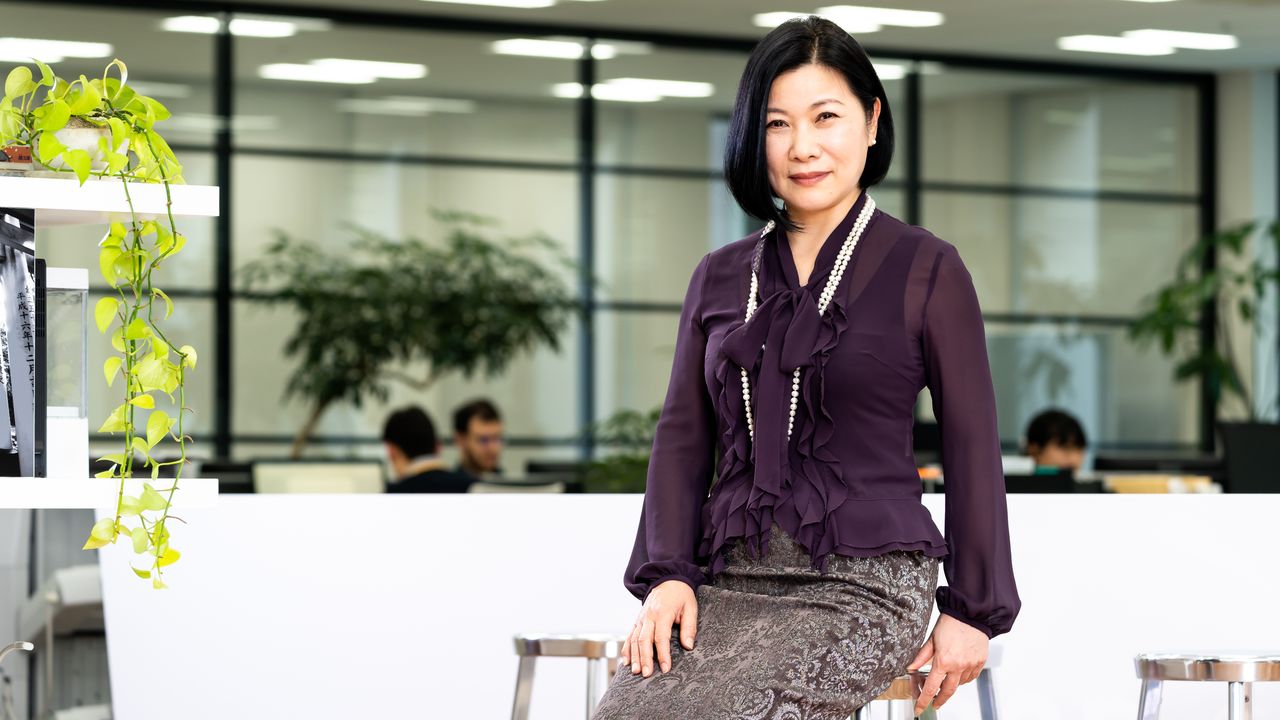
Kakehashi Kumiko: Biographer of Iwo Jima Commander Kuribayashi Tadamichi
Books Entertainment- English
- 日本語
- 简体字
- 繁體字
- Français
- Español
- العربية
- Русский
Kakehashi Kumiko burst onto the Japanese book scene in 2006 with her award-winning debut work Chiru zo kanashiki (translated as So Sad to Fall in Battle), profiling General Kuribayashi Tadamichi, commander of the Japanese forces on Iwo Jima (Iōtō). Together with Clint Eastwood’s 2006 film Letters from Iwo Jima, the book helped fuel a surge in interest in the life and death of this complex and compelling figure, in Japan and overseas. A decade later, Kakehashi was showered with awards for her biography of Shimao Miho, and she most recently won kudos for her portrait of Hara Tamiki, a poet and novelist who wrote of his experience as a victim of the bombing of Hiroshima. On the threshold of a new era in Japanese history, Kakehashi reflects on the fast-receding events of Shōwa and her own mission as a nonfiction writer.
“Like Falling in Love”
INTERVIEWER I’d like to begin by asking what motivates you to write nonfiction.
KAKEHASHI KUMIKO I suppose it’s a desire to understand. For me, writing nonfiction is a means of gaining deeper insight into the subjects that interest me. My genre is biography, which means that my subjects are people. So, it all really begins with a feeling that this is someone I would like to know. Sometimes I’m struck by some eye-opening episode in the person’s life, or something they wrote in a private letter or a diary. Sometimes it’s just the way the person looks. In the case of Shimao Miho, for example, it all began when I saw a photo of her in later years and was struck by her otherworldly beauty. I guess it’s a bit like falling in love. And as with affairs of the heart, it’s not always the finest human beings who captivate you!
I’m not that bright, so I never really understand people until I write about them myself. The research is time consuming, and the writing is, too. It’s through the laborious process of putting my findings into words that I finally see my subject coming into focus. Bit by bit, I begin to understand what drew me to that figure, and why I felt compelled to write about him or her. Then I feel that I’m actually getting to know the person, even though he or she may be long dead. Of all my subjects, Kuribayashi Tadamichi, Shimao Miho, and Hara Tamaki were the most difficult for me to write about, and those were the ones I felt I had truly gotten to know as individuals.
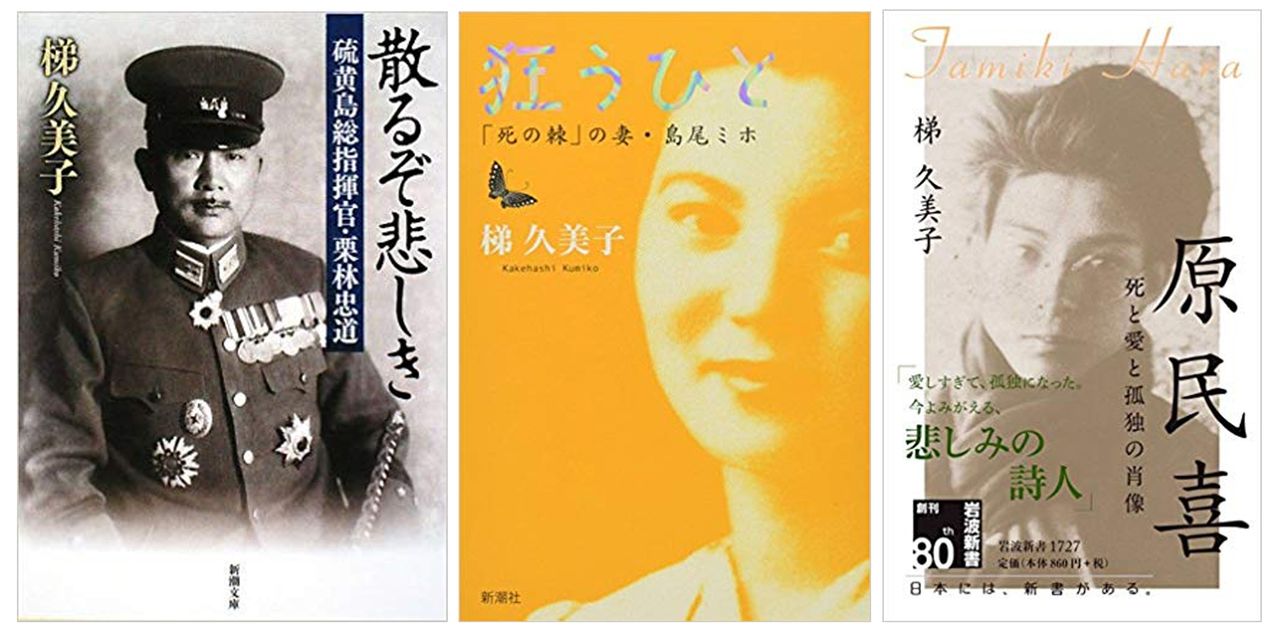
Three of Kakehashi Kumiko’s three best-known biographies: Chiru zo kanashiki: Iō-tō sōshikikan Kuribayashi Tadamichi (So Sad to Fall in Battle: An Account of War Based on General Tadamichi Kuribayashi’s Letters from Iwo Jima), Kuruu hito—“Shi no toge” no tsuma Shimao Miho (Losing It: Miho Shimao, the Wife in “The Sting of Death”), and Hara Tamiki—Shi to ai to kodoku no shōzō (Hara Tamaki: Portrait of Death, Love, and Isolation).
This desire to learn more about someone often switches on when I encounter something that’s at odds with the image I initially had of them. For example, General Kuribayashi is known as the commander who led 20,000 Japanese troops to their deaths in a hopeless last stand on Iwo Jima. From the battlefront, he writes a letter to his family in Tokyo asking if they have managed to fill the gap in the kitchen floorboards and giving instructions for repair, accompanied by diagrams. His attention to the details of domestic life was a revelation. In the case of Shimao Miho, I had this image—probably influenced by her depiction in her husband’s novel Shi no toge—of this pure, angelic woman who loved her husband to the point of madness, but when I spoke with her before her death, I began to have my doubts. She seemed to be a bit of an actress, with a flare for the dramatic.
INTERVIEWER What piqued your interest in Hara Tamiki?
KAKEHASHI Hara, who survived the atomic bombing of Hiroshima, is best known for his novel Natsu no Hana [Summer Flowers], which describes that experience. My initial image of him came from my school textbooks, which simply featured him as a writer of “atomic bomb literature.” As I probed further, though, I discovered some fascinating contradictions. He grew up a son of privilege, but he was so shy that none of his classmates heard him speak during their five years of secondary school. He was something of a shut-in as well. His lack of social skills was such that the only friends he ever made were the members of his small literary coterie. And he was beset by so many anxieties that he took the pen name Kiyū [meaning “groundless fear”]. Yet he committed suicide by lying down in the path of a train—a terrifying way to go. I wanted to know why.
I struggled with the organization of that book. The natural thing would have been to approach it chronologically, from birth to death. But after a lot of thought, I decided I wanted the reader to share in my desire to learn why he did what he did. So, I opened with his suicide. The prologue, which depicts Hara's final moments, took me more than a month to write.
However thoroughly I research and organize in advance, the writing process itself always brings new revelations. I imagine there would be no point for me in writing if it weren’t for such insights. Instead of working toward a predetermined conclusion, I work from the conviction that the passage I’m writing now will lead naturally to the next one.
Beyond Victimhood
INTERVIEWER War features prominently in the lives of many of the figures you’ve written about, including Kuribayashi Tadamichi, Shimao Miho, and Hara Tamiki. For example, in Losing It, you relate how Miho falls in love with Shimao Toshio while he’s stationed in Amami as a naval officer, awaiting orders to lead a suicide attack. What does war mean to you personally?
KAKEHASHI I didn’t start out with the intention of writing about war. The first work I published, So Sad to Fall in Battle, was about Kuribayashi Tadamichi, the general who commanded the Japanese forces in the Battle of Iwo Jima. But it was Kuribayashi’s personality that initially drew me to him as a subject. It was only afterwards that I started learning about the Battle of Iwo Jima, since I had to in order to understand Kuribayashi as a human being. Until then, I knew next to nothing about World War II or the Japanese Imperial Army. During the course of my research, I was lucky enough to unearth some primary sources that hadn’t previously come to light. But frankly, that was my first experience dealing with historical materials.
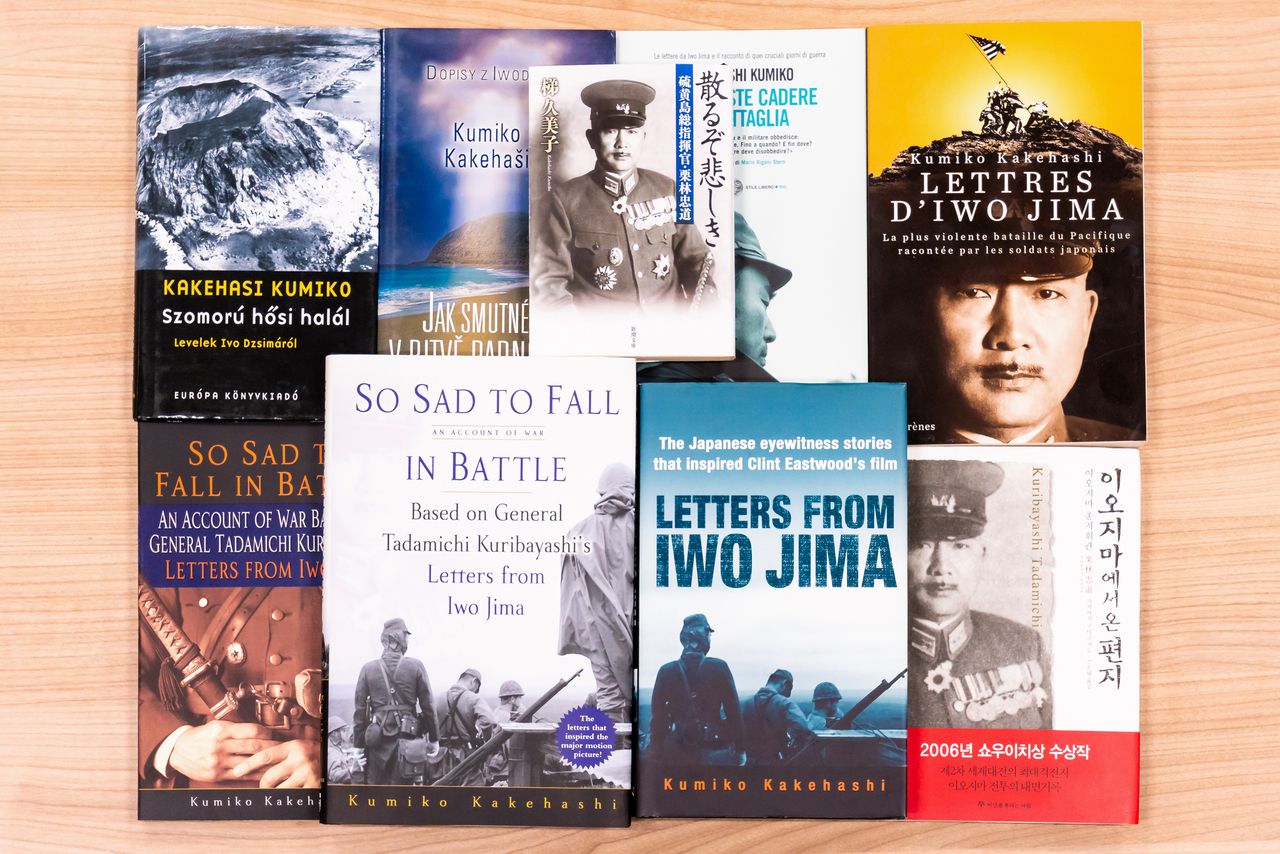
Kakehashi’s biography of General Kuribayashi Tadamichi has been translated into eight languages.
INTERVIEWER In America, the Battle of Iwo Jima is one of the most famous battles of Pacific War, and Kuribayashi is highly regarded as a military commander. Yet in Japan, people knew very little about Iwo Jima or Kuribayashi before your book was published.
KAKEHASHI There were people here who had never even heard of Iwo Jima, and most would have been hard put to find it on a map. In fact, once—this was before Clint Eastwood started making his movie—I asked a newspaper editor whether the paper would be willing to send me to Iwo Jima to write a story, and I was told that it would be hard to get approval for a project outside of Japan!
I think part of the reason that book attracted so much attention was that it was considered unusual for a woman to write about the war, especially with a senior military officer as the main character. As I was writing, it occurred to me that almost none of the war stories I had been exposed to until then focused on soldiers as protagonists. Even now, the networks often air war dramas in August, around the anniversary of the war’s end, but almost all of them focus on the plight of the civilian victims of Hiroshima or Nagasaki or the Battle of Okinawa or the Tokyo fire-bombings. Of course, we should never forget the sacrifice of those people, but that's not all there is to war. It’s also important to describe the human beings who fought and killed and died on the battlefield. I’m not talking about going out of one’s way to emphasize brutality. I just think there should be a place for balanced accounts that describe what actually occurred on the battlefield. It’s very odd that we can only talk about the war from the perspective of victimhood.
INTERVIEWER So Sad to Fall in Battle has been translated into eight different languages. Have you noticed a difference in the way it’s received in other countries?
KAKEHASHI When the English translation went on sale on Amazon, I read almost all the reader reviews. It was a relief to find that most readers came away with respect for the Japanese soldiers who had fought so courageously for their country in the Battle of Iwo Jima.
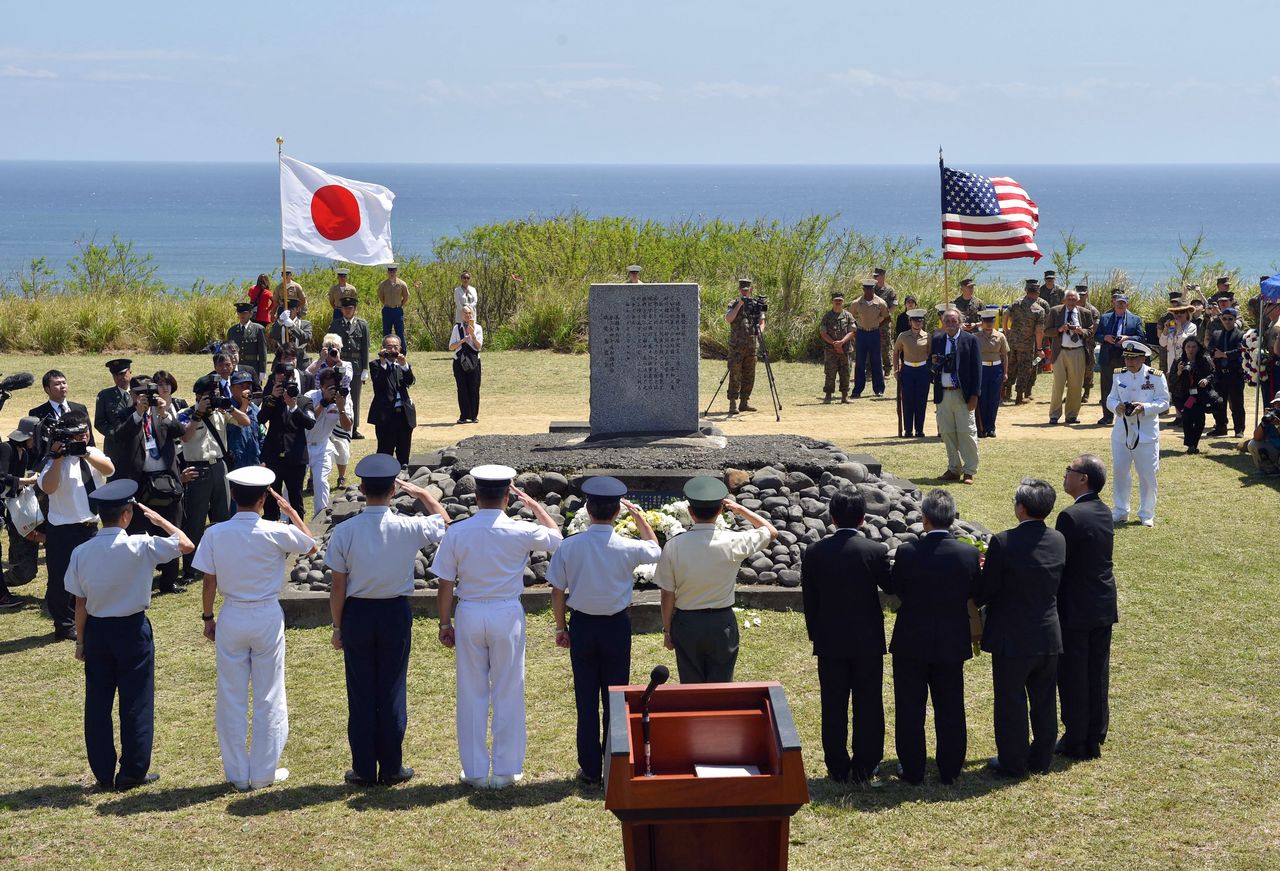
The Japan-US Joint Ceremony commemorating the 73rd anniversary of the Battle of Iwo Jima, held on the island of Iwo Jima (officially known in Japanese as Iō-tō) on March 24, 2018.(Jiji)
Message in a Bottle
INTERVIEWER How do you see the job of a nonfiction writer?
KAKEHASHI A journalist works on behalf of the public, reporting on events going on in the world right now, so that others will know what they need to know. And what they write can really change the world. The sort of history and biography that I write is unlikely to change the world. But writers of nonfiction—and fiction as well—proceed on the assumption that somewhere out there in this wide world there are bound to be people for whom their book fills a need, and we get to cast our net out farther.
In some cases, the audience for a book may not even exist yet. I comfort myself with the thought that someone, somewhere down the line, will find one of my works and be grateful they did.
INTERVIEWER The Heisei era is drawing to a close. As someone who has specialized in chronicling the previous Shōwa era [1912–89], how would you characterize Heisei?
KAKEHASHI Heisei [1989–2019] was supposed to be a time when we settled accounts and addressed all kinds of unfinished business from the Shōwa era. I don’t think we did a very good job of it. The shadow of Shōwa still lingers. It’s like an underground stream that keeps surfacing. To be frank, at the outset of the Heisei era, I never imagined that there would be so many unresolved social, economic, and foreign-policy issues left for future generations to deal with.
Another thing that bothers me is the way people approach history nowadays. History is a very complex subject. No one should imagine that one piece of evidence can establish conclusively that this or that side was in the wrong, or that such-and-such an event never occurred. But people today lack the patience and resolve to unravel all the tangled threads. We’re losing the intellectual capacity to grapple with history’s complexities.
(Originally written in Japanese. Interview and text by Sainowaki Keiko. Photos by Miwa Noriaki)
